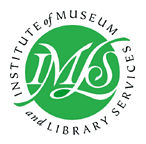 |
 | |
| Preserving and Digitizing Plant Images: Linking Plant Images and Databases for Public Access Completed November 2000 | ||
The Process
Background
The starting point for the IMLS project is digitizing approximately 3,000 plant images taken by noted ecologist, plant taxonomist and author Dr. Alwyn Gentry. Gentry's work focused on the family Bignoniaceae, but also included many other families. The demand for his work is very high, and there is a consistent demand for his slides and publications.
Step 1 - Sorting the slides
Initially, each slide will be examined to determine whether Dr. Gentry assigned a collection number to it. If there is no collection number on the slide, it will be filed in an "inactive" drawer. The process for digitizing and recording the slides in the inactive drawer will be determined later.
Slides with collection numbers on them will be checked against the TROPICOS database to find out if a record for the collection number has been established. If there is a record in TROPICOS for the collection number, the slide remains in the active drawer for further action.
Slides with collection numbers that are not in the TROPICOS database will have "skeleton" records created for them in TROPICOS. Information generally available on the slides, with a minimum of collection number and collector name, will be entered in the skeleton record.
After the record has been created, the collection number will be recorded in a spreadsheet so that more data can be added to the record from Dr. Gentry's field books and any other available sources, and the slide will be filed in the active drawer.
